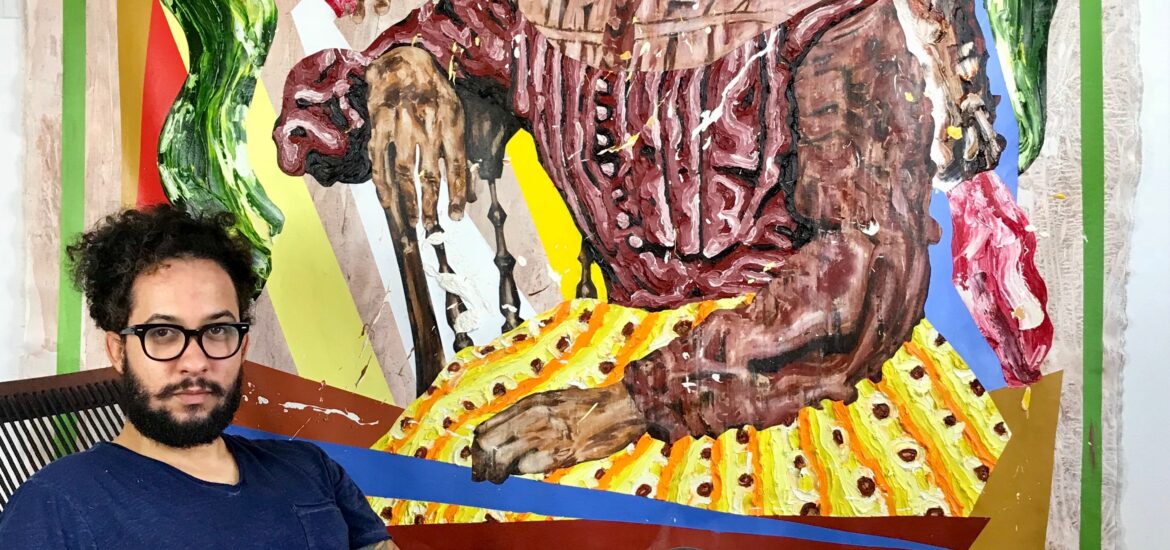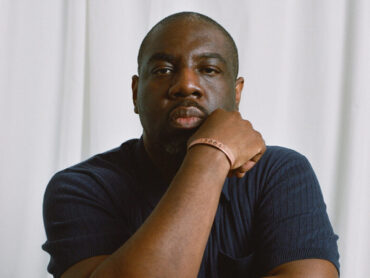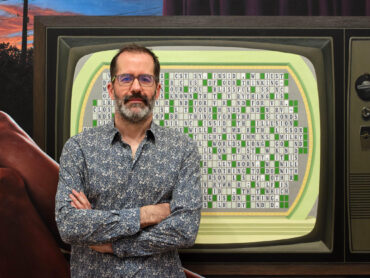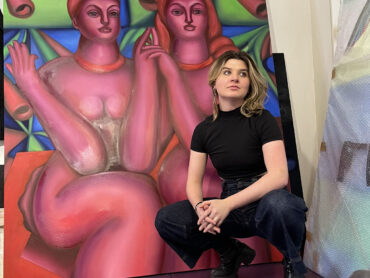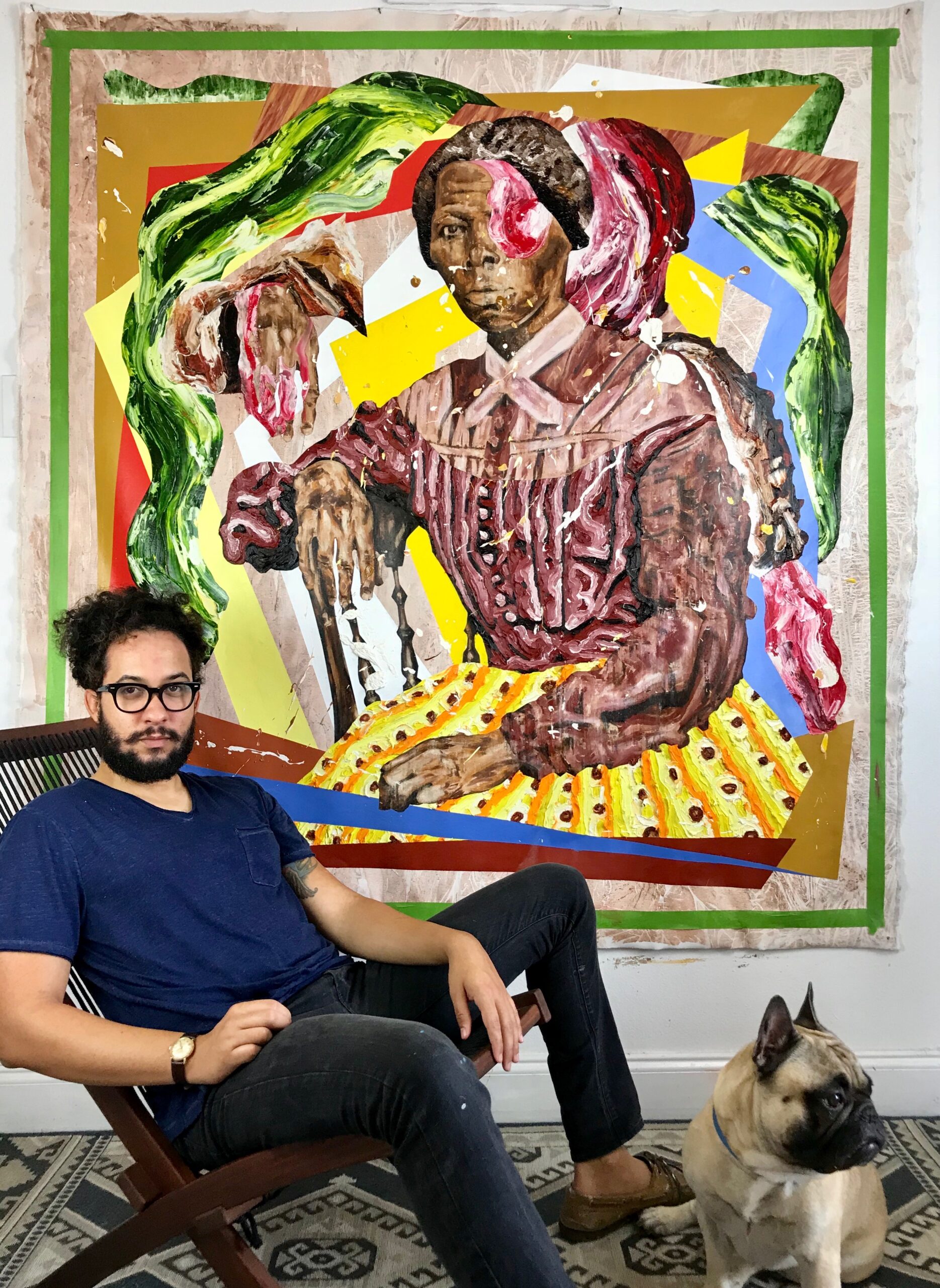
William Osorio with next to his painting of Harriet Tubman, ” The Illusionary Depth of Mirrors”
In a cozy studio, filled like one would imagine a Broadway play scene might look like, an intellectual thinks and works. In this space, a balance breathes. Nostalgia in the now: composition, color, and innovative, sincere conversation. At the Bakehouse art Residency in Miami, William Osorio hosts us, beset by some of his beloved things. A high bookshelf loaded with mentors of theory and art, keeping him company.
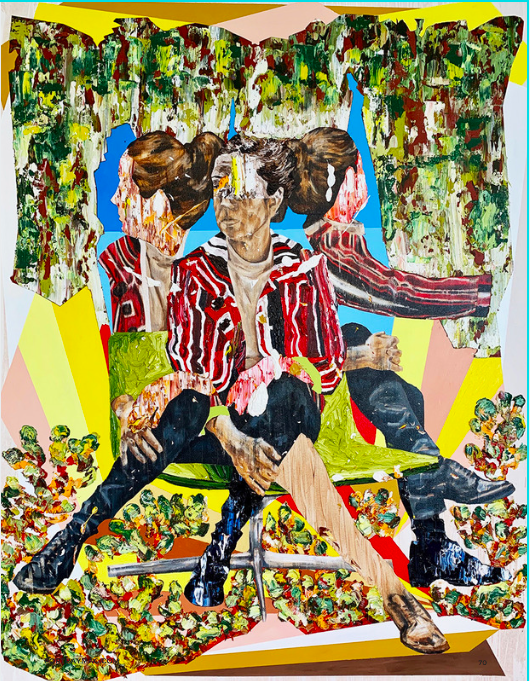
William Osorio, “Contingency II”
In the corner, the comfiest brown leather armchair (sans one arm), where his adorable pug had carved a little masterpiece of his own in the wood, making it even more endearing to the artist and a small, round chartreuse footstool. Tidily stashed filing chests that store his paintings, silkscreens, sketches, and four large canvases pinned on the walls, I want to see everything. All of his art is based on photographs. He will piece them together and then from there, with a thought of time and space, create something beautiful to look at at, and worthy of a great discussion. William engages you with the most current or the most beloved book that has changed his life, molding his thoughts and work. He is personable, immensely refreshing to regard as he describes his work as we explore the experience, including how we evolve, adapt, and develop as his career has. This past winter, he did a residency at the Anderson Ranch Arts Center.
There is a knowing in this burgeoning artist that transcends time, that is revealed in a layered, engaging language in his work so synergistically, it is staggering.

Beyond the Horizon
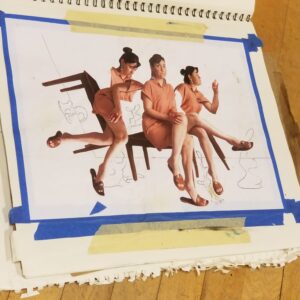
Beyond the Horizon Genesis
To look at a work of William Osorio, the first thing you say to yourself is, that is a wicked collage. As you approach the work closer you try not to touch it, even though you want to. Thoughts toggle back and forth between, How did he do that? Then, What is the deeper meaning of this? It is an expulsion of understanding human nature. Sparatic, His subjects, Engulfed in a collage of textures and thick layers of oil and acrylic paint, as he explains, will over time, crack and change, as the outside of the human body does. This notion intrigues him as he knows he may not see his paintings in person in 20 years, but he knows, they too will evolve organically with free radicals as humans do. All done with paint. He isn’t shy about his process or his color choices.”William uses the human figure as the spotlight of the work, which becomes the inescapable theme. As your eyes focus from one part of the canvas to another, they gravitate to something familiar, perhaps a leg, and you realize there are one or two too many. Or a face, but then you notice there are two, and that is where the psychology comes in. It becomes his observation on the subject and the movement in time.
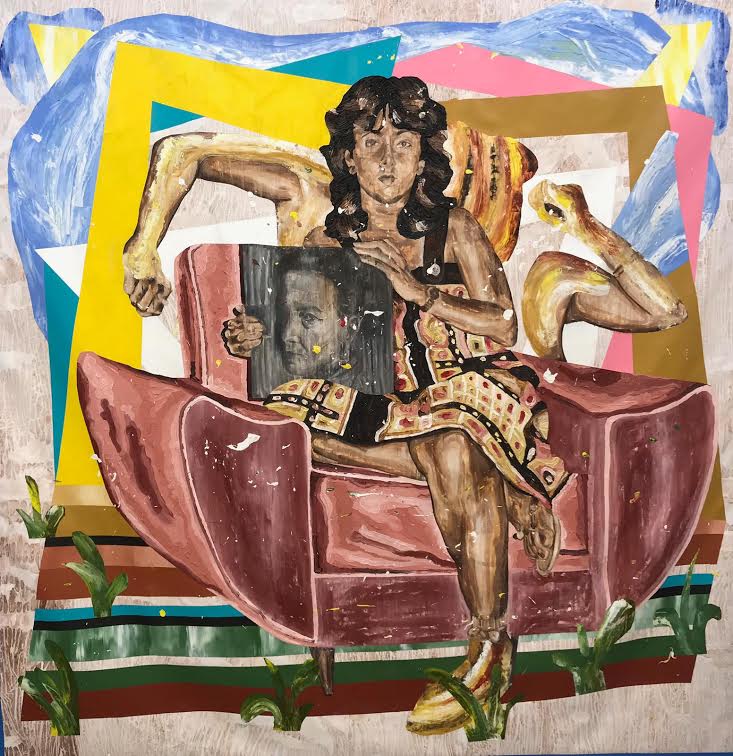
Conversations with Simone de Beauvoir
Consistent inspiration in all of William’s work is extracted from literature. His painting above entitled, “Conversations with Simone” was inspried by writings of Simone de Beauvoir, existentialist philosopher, who laid the foundation for the femenist movement in her book, “The Second Sex.” The springboard that led him into philosphy was a book by Jorge Luis Borges, an Argentinian writer that piqued his curiosity and challenged his thinking to another level. In his studio, he has many books on philosophy that he can quote when prompted in conversation. There was an apparent eagerness that seemed to sparkle when the conversation would become indicative of the human spirit. Enthusiastically, I remember the first time I met Willima with Sergio Cernuda, he opened a book, and I thought to myself: You can go down a deep well with William, and Sergio looked my way, nodding and smiling as if to say, “He is something special, right?” and right you are Sergio, he is something special.
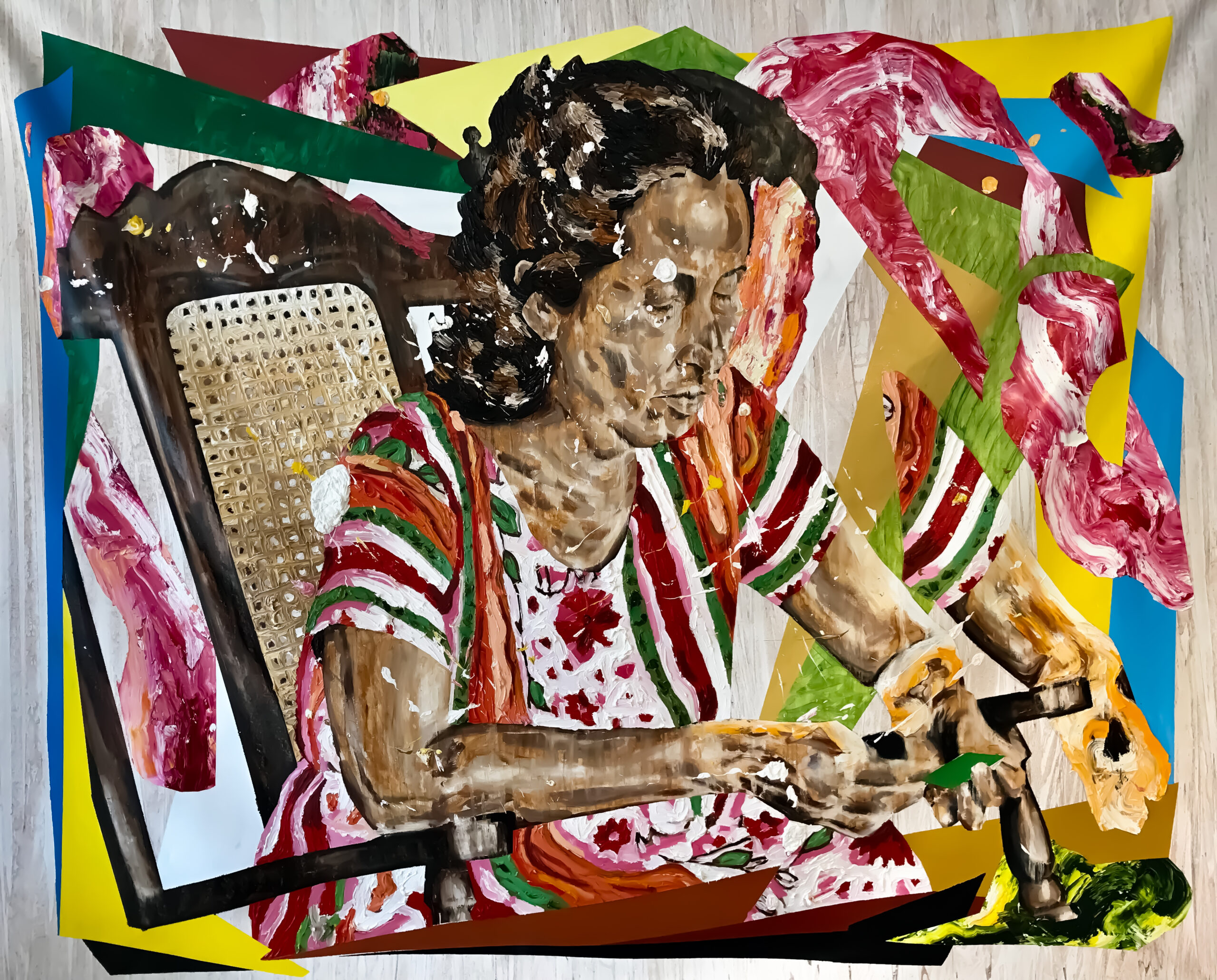
The Ineffable Being 2019
The above painting of the Ineffable being, is in a way a self portrait, where the Green card represents him. It is a memory of his mother in Cuba, the first time she saw his Green card. (Described by the artist in the video on Portray’s instagram)
At the root, he questions the human condition and has deep empathy for what he calls “Common sense” of any culture. A conformist mentality understood as a truth to the general public at any given time or place that isn’t cohesive as a socially accepted way of thinking or behaving in the here and now. The reason he chooses many of his subjects, including Harriet Tubman, was because she challenged the “Common sense” She was a pioneer, a warrior, and rested on what was just and true, even if it was her truth. Words, phrases and ideals can completely alter themselves with the right questions and then, adaption to a given notion. As he paints, he bonds philosophical thoughts with other concepts, that begin swirling around and within it that divulge chaos and consistency generously, in glorious color on his canvas. He will then expropriate elements from the surroundings, taking into substantial consideration paradigms and history surrounding the figure, center stage. His work is a culmination of summoning the intent, not in searching for resolve and finding and creating irregularities where there are none seemingly present. William, preferring to be mostly a self-taught artist, abandons tradition and exploits the notion of entertaining extremes.
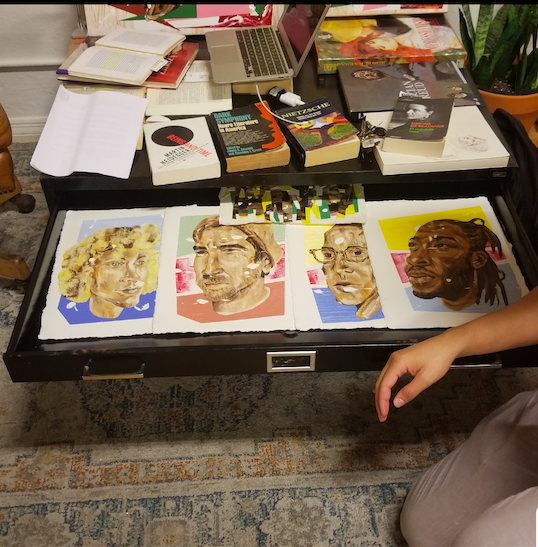
Williams studio and some paintings of some of his fellow artists from the Anderson Ranch, and some of his books.
You can find his art at the LNS Gallery in Miami.
